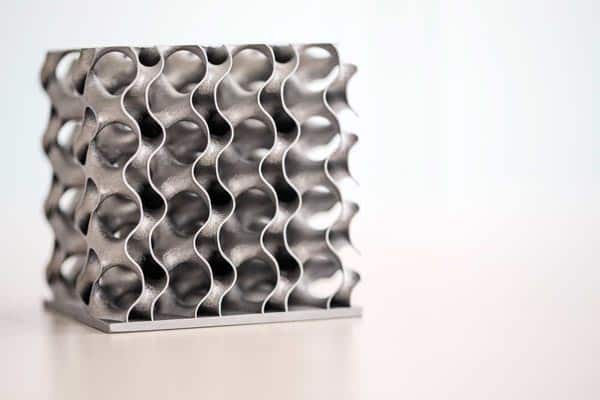Product development thrives on rapid prototyping – the ability to quickly create physical models to test, refine, and iterate on designs. Two powerful tools at our disposal are CNC machining and 3D printing. But when choosing the right one for your project, the answer isn’t always straightforward. This article explores the strengths and weaknesses of both technologies, helping you make an informed decision.
Importance of Rapid Prototyping in Product Development
Rapid prototyping is a game-changer in product development. It lets you turn abstract ideas into physical models, allowing for better evaluation and early identification of potential problems with fit, form, and function. This facilitates gathering real-world user feedback to refine your design, all while accelerating the development process through quick iterations that lead to faster product launches.
Defining CNC Machining
CNC machining, is a subtractive manufacturing process. A solid block of material (metal, plastic, etc.) is fed into the machine, and computer-controlled tools remove the material to create the desired shape.
- Materials: Wide variety, including aluminium, steel, brass, and plastics.
- Advantages: High precision, excellent surface finish, strong and durable parts, suitable for large production runs.
- Limitations: Can be time-consuming to set up, limited to creating designs that can be machined with traditional tools, and potentially wasteful due to material removal.
Exploring 3D Printing
3D printing, also known as additive manufacturing, builds objects layer by layer based on a digital 3D model. Material is deposited or solidified to create the desired shape.
- Types of Technologies: FDM (Fused Deposition Modeling), SLA (Stereolithography Apparatus), SLS (Selective Laser Sintering), etc.
- Materials: Plastics, metals, resins, and even food-grade materials are becoming available.
- Advantages: Rapid turnaround times, ability to create complex geometries, good for low-volume production runs, allows for easy customization.
- Limitations: Parts may not be as strong or durable as CNC machined parts, surface finish can be rough depending on the technology, and limited material selection compared to CNC machining.
Comparing CNC Machining and 3D Printing
| Factor | CNC Machining |
3D Printing |
| Speed & Accuracy | Generally slower setup, but highly accurate | Faster turnaround for simple designs, accuracy can vary depending on technology |
| Material Selection | Wide variety of materials | Growing selection, but still limited compared to CNC machining |
| Complexity of Designs | Limited to machinable geometries | Can create highly complex geometries |
| Cost Considerations | Higher setup costs but lower cost per unit for larger quantities | Lower setup costs but higher cost per unit for small quantities |
| Scalability | More cost-effective for larger production runs | More suitable for low-volume prototyping |
Choosing the Right Tool for the Job: CNC Machining vs. 3D Printing
Deciding between CNC machining and 3D prototyping for rapid prototyping depends on your needs. Here’s a breakdown to help you choose:
CNC Machining Takes Center Stage:
- Precision is Paramount: CNC machining reigns supreme when your design demands exceptional accuracy and tight tolerances. Its computer-controlled approach ensures highly precise parts, crucial for components where exact dimensions are essential for functionality.
- Gearing Up for Production: CNC machining becomes a cost-effective option if you envision large production runs. While setup might take longer, the per-unit cost drops significantly for larger quantities.
- Material Matters: Does your final product require specific materials that are difficult or impossible to 3D print? CNC machining offers a wider material selection, including metals, various plastics, and even wood. This allows you to create prototypes that closely resemble the final product regarding material properties.
- Tight Tolerances, Tight Function: When precise fit and smooth operation are critical for your prototype’s functionality, CNC machining delivers. Its ability to achieve tight tolerances ensures components work seamlessly together as intended.
3D Printing Shines for Rapid Iteration:
- Agility is Key: Do you need to rapidly iterate and experiment with different design variations? 3D printing excels in this arena. Its fast turnaround times allow you to create multiple prototypes quickly, facilitating swift design changes and improvements.
- Conquering Complexity: Does your design boast intricate geometries or unique features that would be challenging or expensive to machine? 3D printing thrives on complexity. It can handle intricate shapes and internal details with relative ease.
- Small Batch Prototyping: If you only require a handful of prototypes for testing and user feedback, 3D printing often proves more cost-effective. The lower setup costs make it ideal for small-scale prototyping needs.
- Material Exploration: Want to explore different materials for your design before committing to a final choice? 3D printing offers a growing selection of materials, allowing you to experiment and find the perfect fit for your application.
Wrapping It Up
Both CNC machining and 3D printing are valuable tools for rapid prototyping, each with its strengths and weaknesses. By understanding the factors discussed in this article, you can decide which technology best suits your specific project needs. Remember, the ideal choice often depends on factors like design complexity, material requirements, budget, and production volume.
Reference
*Image from https://kayfreesm.pics/

